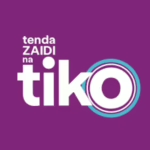Mediation by Nick Youngson CC BY-SA 3.0 Pix4free
The Mediation Task Force appointed to oversee the establishment and roll out of the Court Annexed Mediation, will establish 15 Registries in the financial year 2022/2023 and a further 25 in the financial year 2023/2024.
Established in 2017, the Court Annexed Mediation (CAM) is one of the primary Alternative Dispute Resolution mechanisms promoted by the Judiciary. Over the five-year period, many disputes filed in Courts across the country have been resolved resulting in billions of shillings held in litigation being released into the economy; restored relationships between disputing parties; and improved the commercial environment.
Hon. Caroline Kendagor who is the acting registrar Court Annexed Mediation says entrenchment of mediation in Court practices commenced with the amendment of the Civil Procedure Act in 2012 to include the establishment of a Mediation Accreditation Committee (MAC), give courts the discretion to refer a dispute to mediation upon request of the parties by law and enforce private mediation agreements.
According to a report by the Taskforce, a total of 10,024 matters have been referred to mediation by various courts so far, with a total of 9,186 matters having been concluded and 4021 were resolved successfully.
“This represents a 45% success rate. The highest average achieved over the monthly measured period between January 2022 to date is 64%, with children cases for custody and maintenance having the highest settlement rate of 63% compared”, says Hon. Kendagor.
According to the report, the Magistrates Court is leading with the highest settlement rate of 55% compared to the other Courts.
At the same time, the cumulative value of matters referred to mediation stands at Ksh 48. 08 billion with Ksh 13.2 billion being the value of matters referred to mediation in FY 2021/22. The report also puts the cumulative value of matters that have had settlement agreements at Ksh 12.95 billion at the end of the FY 2021/22, out of which Ksh 2.45 billion was the value of settlements realised during the period under reference.
The work of the Court Annexed Mediation CAM has however not been without challenges, as the taskforce has cited lack of adequate funding and office space; lack of knowledge as CAM is relatively new within the judiciary; lack of sufficient human capacity as well as operating a largely manual process, as the main challenges facing the process.
The model adopted in Kenya is mandatory referral of cases once the court screens and finds the matters suitable for mediation. The court then appoints a mediator from the Register of Accredited Mediators, with the mediation proceedings expected to be concluded within 60 days, with a possible extension of not more than 10 days. The Mediators fees are paid by the Judiciary, currently the rate is fixed at KES. 20,000/= per file.
Courts were selected randomly in the first phase of the roll out, and the Taskforce has since adopted a data driven approach in identification of courts for roll out of CAM. The criterion considers five variables: number of pending civil cases, backlog of civil cases, time to disposition of civil cases and Court user satisfaction index.



















